Social media competitor analysis has evolved from a nice-to-have activity to a strategic necessity. While you’re busy creating content and engaging with your audience, your competitors are doing the same and potentially doing it better. The real question isn’t if you should analyze your competition, but rather how to do so effectively and consistently.
With social media ranked the No. 1 channel for connecting with customers, businesses that master competitor analysis gain a significant advantage in audience engagement, content strategy, and market positioning.
This comprehensive guide will walk you through everything you need to know about performing a social media competitor analysis that drives real business results. You’ll learn how to identify the right competitors, analyze their strategies systematically, and turn competitor insights into actionable growth opportunities for your brand.
The easiest way to manage and grow your social channels.
Try ContentStudio for FREE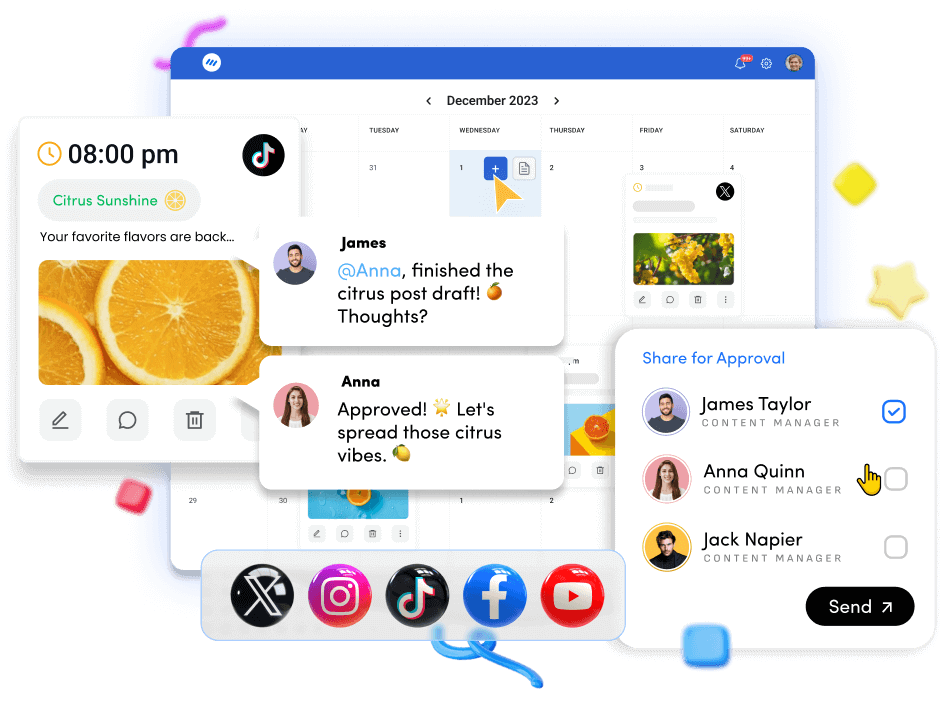
What is a social media competitor analysis?
A social media competitor analysis is the systematic process of researching and evaluating your competitors’ social media strategies, performance, and tactics to gain insights that improve your own social media marketing efforts.
This analysis goes beyond simply following your competitors’ accounts. It involves:
Strategic intelligence gathering:
- Understanding how competitors position themselves across different platforms
- Analyzing their content strategies, posting frequency, and engagement tactics
- Identifying their target audience and how they interact with followers
- Evaluating their social media advertising approaches and budget allocation
Performance benchmarking:
- Comparing engagement rates, follower growth, and reach metrics
- Analyzing which content types generate the most interaction
- Understanding seasonal trends and campaign performance
- Measuring share of voice within your industry
Opportunity identification:
- Finding content gaps your competitors haven’t addressed
- Discovering underutilized platforms or audience segments
- Identifying trending topics and hashtags before they peak
- Recognizing weaknesses in competitor strategies, you can exploit
Modern competitor intelligence
Unlike traditional market research, social media competitor analysis provides real-time insights into competitor activities. You can see immediately when a competitor launches a new campaign, changes their messaging, or experiences a viral moment, allowing you to respond quickly and strategically.
The goal isn’t to copy your competitors, but to understand the competitor landscape well enough to differentiate your brand effectively while learning from proven strategies that work in your industry.
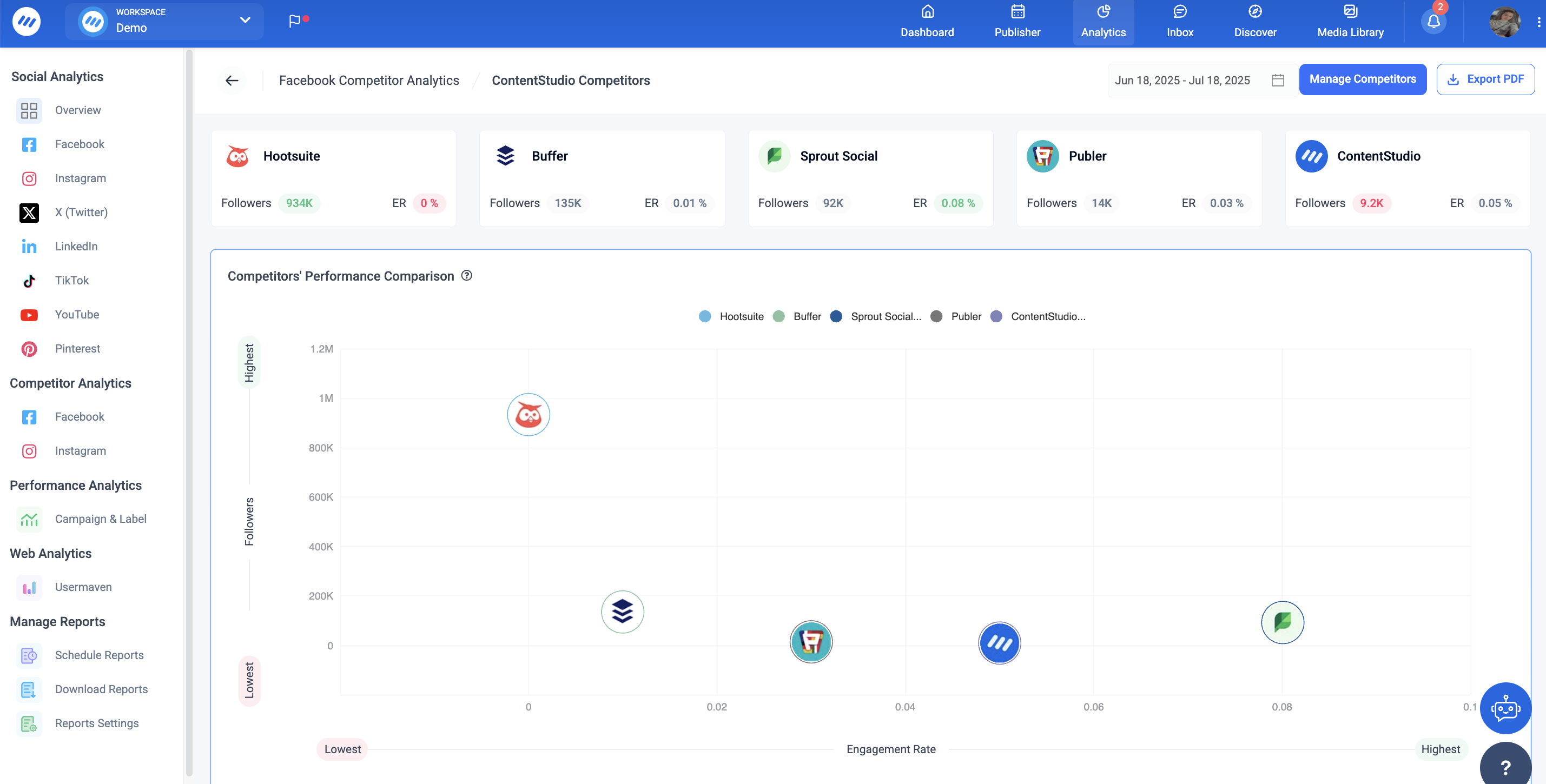
The benefits of running a competitor analysis on social media
Conducting regular social media competitor analysis delivers significant advantages that directly impact your marketing performance and business growth. Understanding what your competitors are doing right (and wrong) on social media provides invaluable insights that can change your own strategy from reactive to proactive.
The strategic approach helps you avoid costly mistakes while identifying proven tactics that work in your industry. The key is knowing how to extract actionable insights from competitor data and apply them to your unique brand positioning.
1. Identify content gaps and opportunities
One of the most valuable outcomes of social media competitor analysis is discovering what your competitors aren’t doing well or aren’t doing at all. These gaps represent golden opportunities for your brand to establish thought leadership and capture audience attention in underserved areas.
- Content strategy optimization: By analyzing what your competitors post, you can identify topics, formats, and approaches they’re missing. These gaps represent opportunities for your brand to establish thought leadership and capture audience attention.
- Trending topic Discovery: Competitor analysis can be conducted in various ways and using multiple tools. Any tool that allows you to monitor your brand and others can also be used to track competitors and gain invaluable insights into the competition. You can spot emerging trends and topics before they become saturated, giving you a first-mover advantage.
Related: Best competitive intelligence trends for 2025
- Format innovation: Understanding which content formats work best for competitors helps you experiment with new approaches, such as video content, interactive posts, user-generated content, or live streaming.
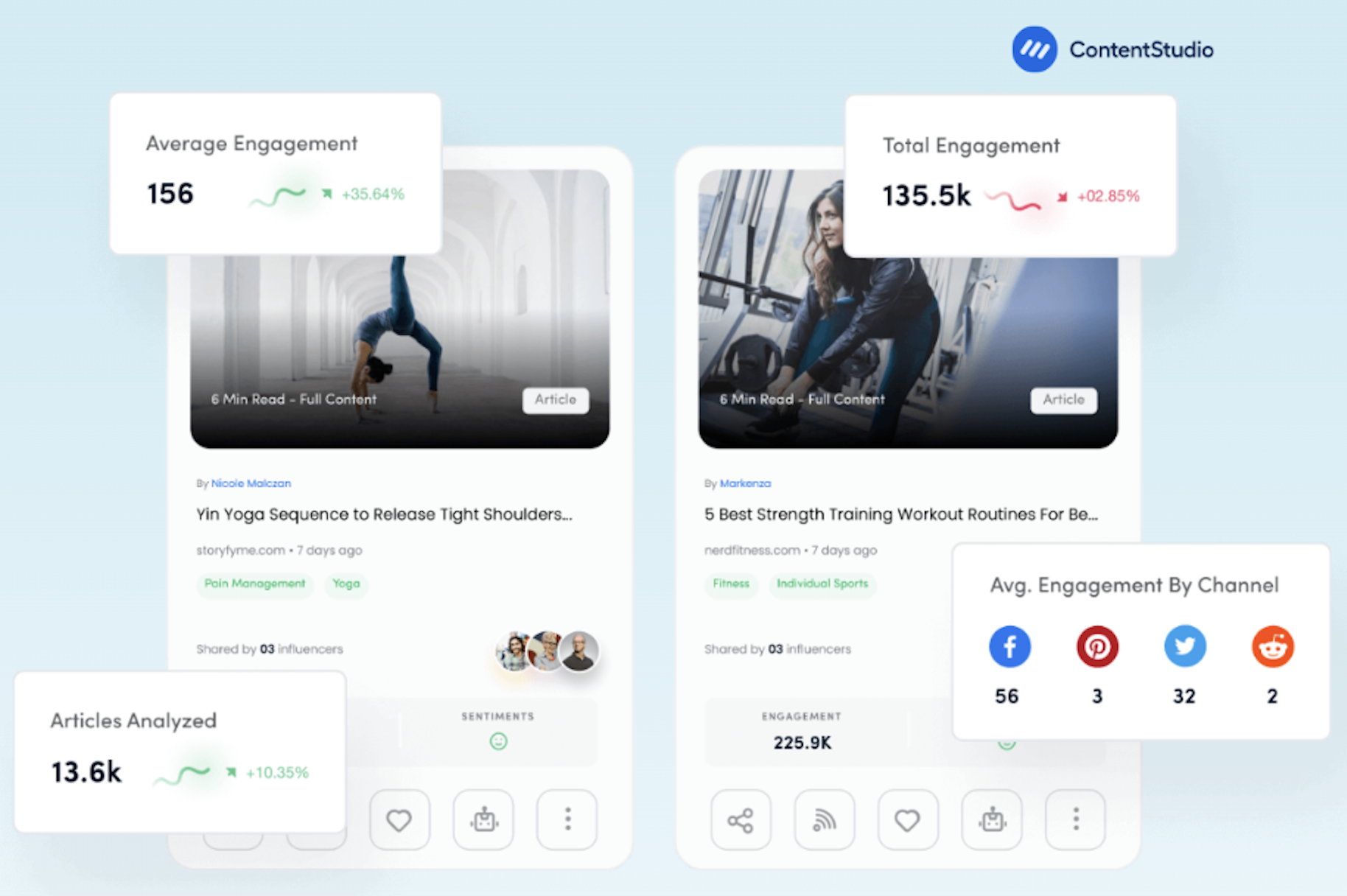
2. Understand audience preferences and behavior
Your competitors are targeting the exact audience you want to reach, making their social media activities a valuable window into what resonates with your potential customers. By analyzing how audiences interact with competitor content, you gain insights that would otherwise require extensive market research.
- Audience intelligence: Competitor analysis reveals what resonates with your shared target audience. You can see which posts generate the most engagement, what time followers are most active, and which messaging approaches drive responses.
- Engagement pattern analysis: Track how audiences interact with competitor content to understand preferences for different platforms, content lengths, and interaction styles.
- Community-building insights: Observe how competitors build and nurture their communities, respond to comments, and handle customer service issues in a public manner.

3. Benchmark your performance against industry leaders
Without a competitor context, your social media metrics exist in a vacuum. Understanding how you perform relative to competitors and industry standards provides the perspective needed to set realistic goals and measure true success.
Performance context: Your social media metrics only have meaning when compared to industry standards and the performance of your competitors. Competitor analysis provides the necessary context to evaluate your success accurately.
Goal setting: Understanding top-performing competitors helps you set realistic yet ambitious goals for follower growth, engagement rates, and content performance.
Strategic positioning: See how your brand’s social media presence compares to competitors in terms of voice, visual identity, and market positioning.
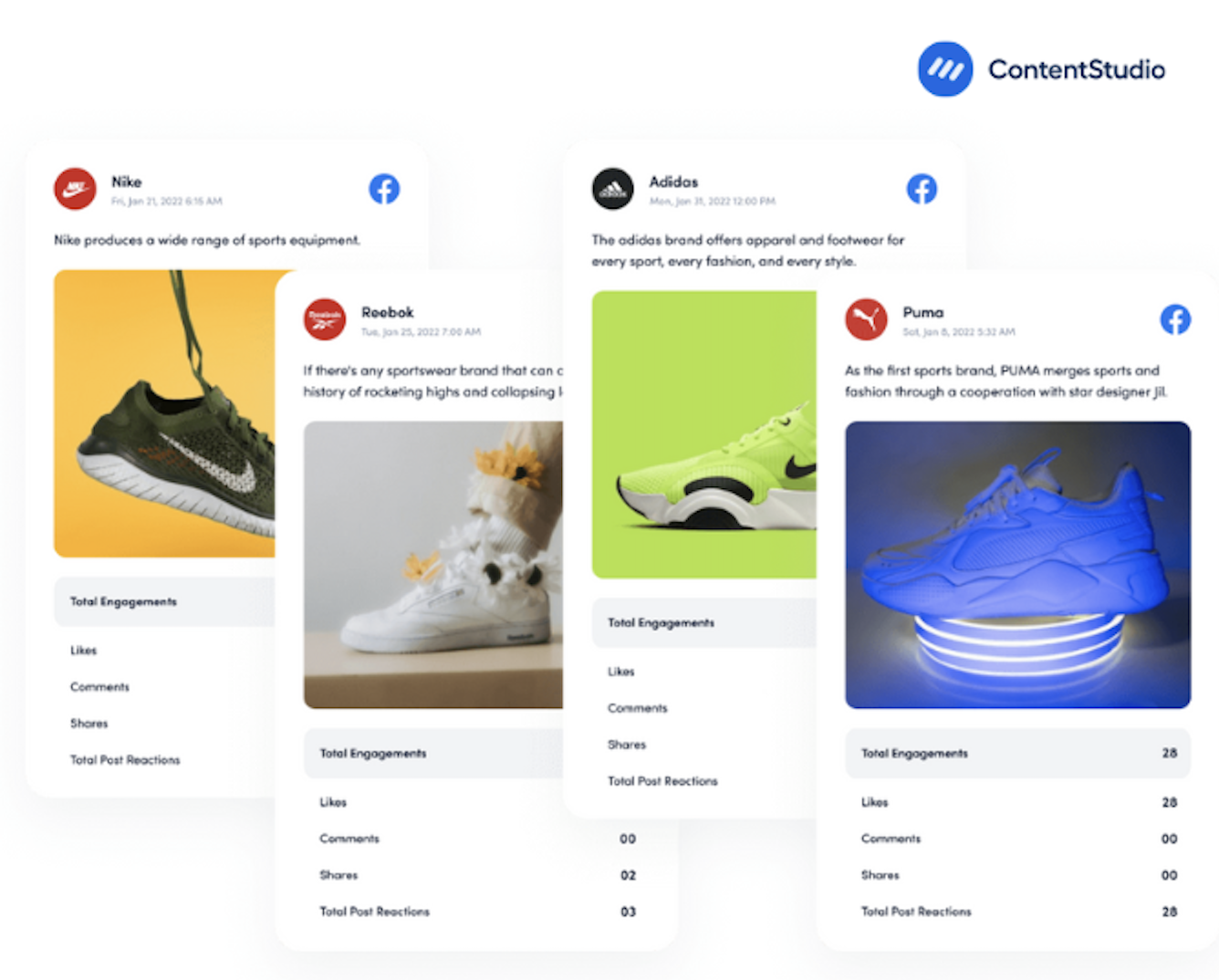
4. Discover trending topics and hashtags
Staying ahead of trends is crucial for social media success, but manually tracking every emerging topic is impossible. Competitor analysis provides a systematic way to identify what’s gaining traction in your industry before it becomes mainstream.
Hashtag strategy: Identify which hashtags competitors use successfully and discover new hashtag opportunities that could expand your reach.
Content calendar planning: Understand seasonal trends, industry events, and promotional periods that competitors capitalize on, helping you plan your content calendar strategically.
Real-time trend monitoring: Stay ahead of industry conversations and trending topics by monitoring competitor activities and audience responses.
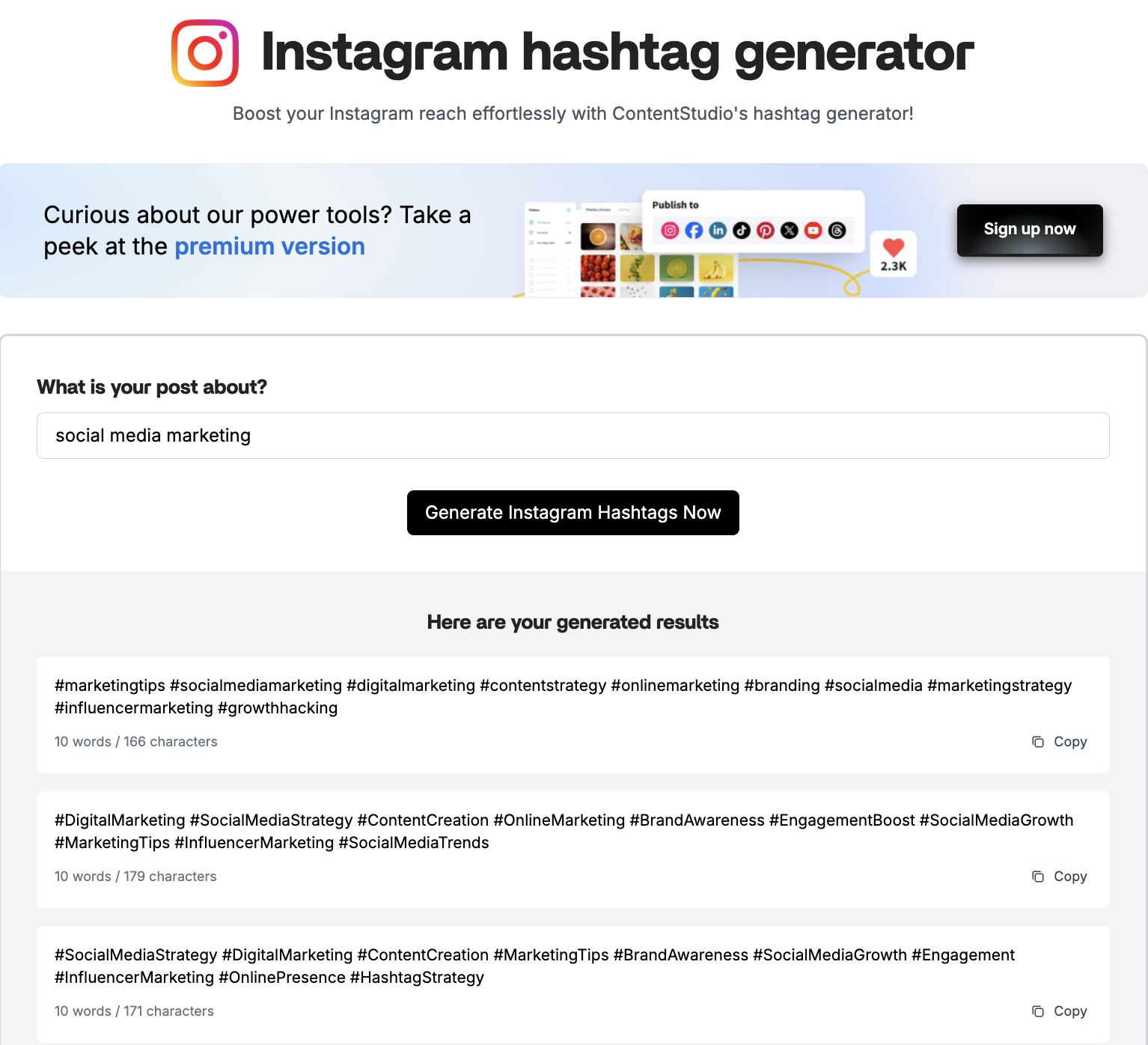
5. Improve your content strategy and posting schedule
Timing and consistency are critical factors in social media success. By analyzing when competitors post and how their audiences respond, you can optimize your posting strategy for maximum impact.
Optimal timing: Analyze when competitors post and when their content receives the most engagement to optimize your posting schedule.
Content mix analysis: Determine the optimal ratio of promotional, educational, and entertaining content that works best in your industry.
Related: Proven methods for streamlined social media content planning
Platform strategy: Identify which platforms competitors prioritize and how they tailor their content for various social media channels.
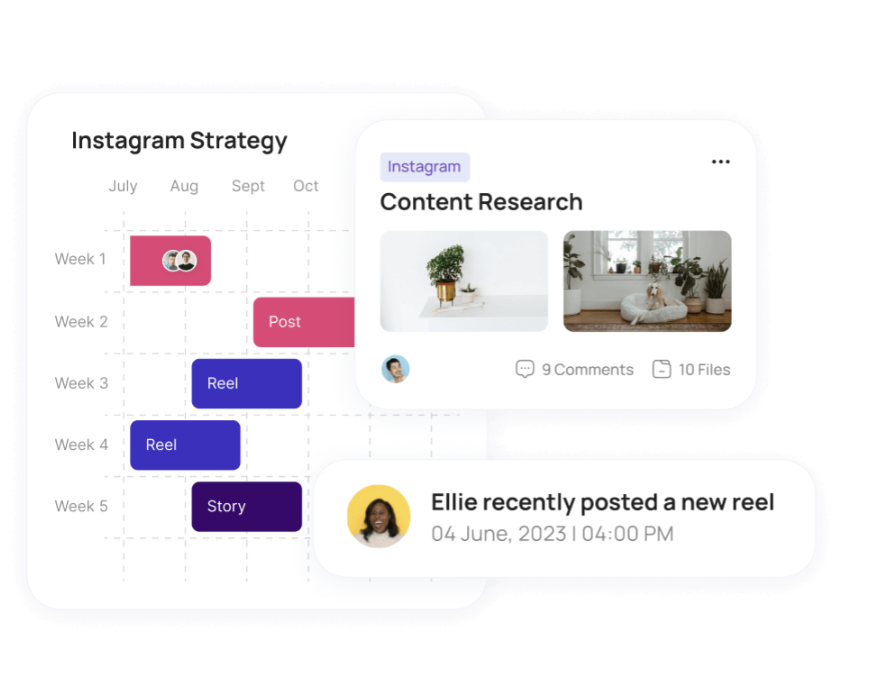
6. Competitor advantage development
The ultimate goal of competitor analysis is to develop sustainable advantages that set your brand apart from the competition. It involves both learning from competitor successes and identifying ways to differentiate your approach.
Differentiation opportunities: Understanding competitor strategies enables you to identify effective ways to differentiate your brand and messaging approach.
Weakness exploitation: Discover areas where competitors underperform or have poor customer sentiment, creating opportunities for your brand to excel.
Innovation inspiration: Learn from competitor successes and failures to innovate your social media approach without making the same mistakes.
The businesses that thrive on social media aren’t just creating good content—they’re making strategic content informed by competitive intelligence. Regular competitor analysis ensures your social media efforts are informed, strategic, and positioned for maximum impact.

How to do a social media competitor analysis in 4 steps
Effective social media competitor analysis requires a systematic approach. This proven 4-step framework ensures you gather the right intelligence and turn it into actionable strategies that drive real business results.
Step 1: Identify your social media competitors
The foundation of practical competitor analysis lies in identifying the right competitors to monitor. It goes beyond obvious business competitors to include accounts that compete for your target audience’s attention.
- Use Google search. Start by searching for your product category as a customer would – type “fitness gear” or “athletic wear” and analyze the top results. Visit competitor websites, such as Nike and Puma, to study their offerings. Then, examine their social media presence to understand their content strategy and audience engagement patterns.
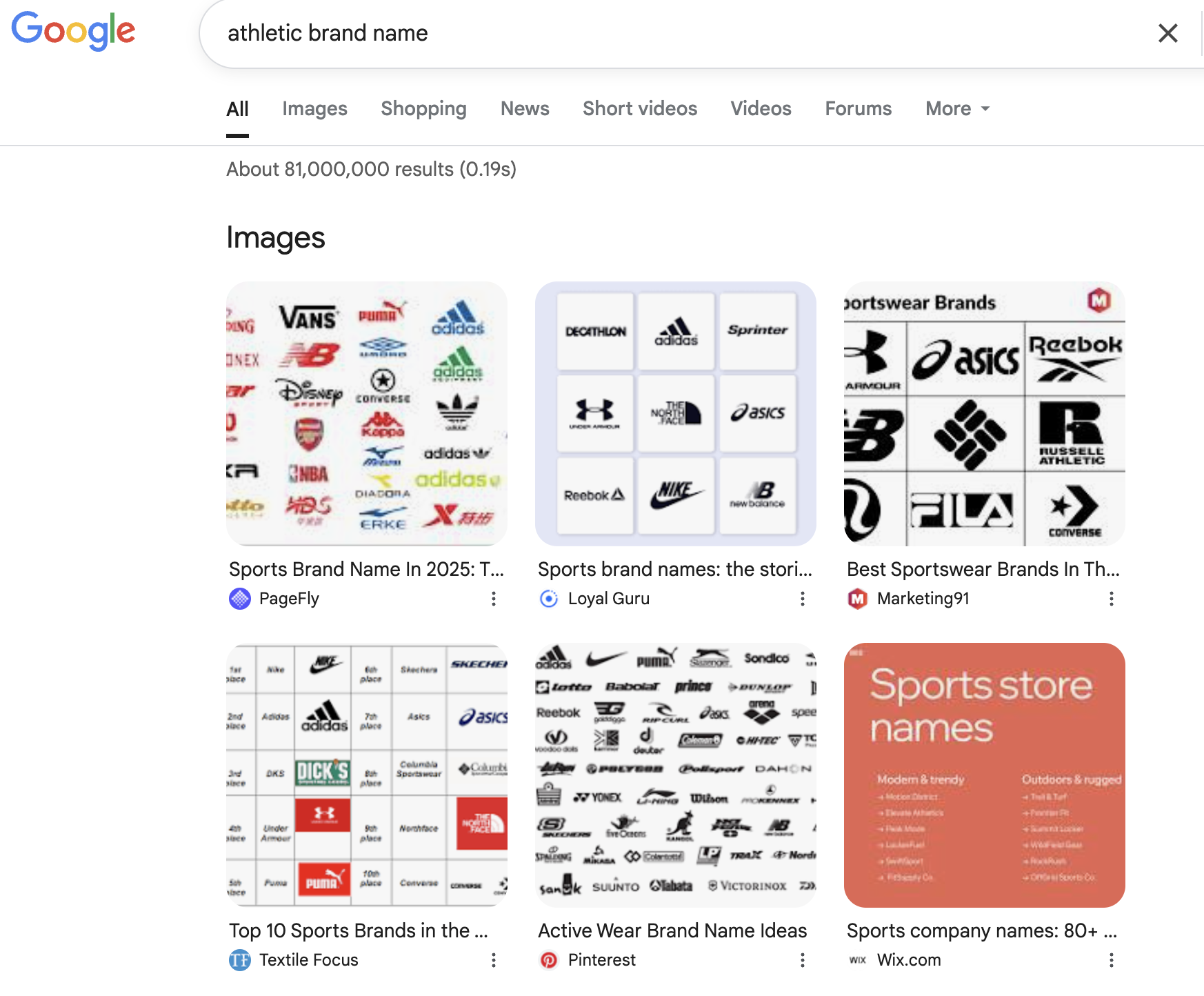
- Use Social Media Monitor to monitor fitness-related conversations on social platforms to identify competitors through organic mentions and discussions. Track hashtags, comments, and user-generated content to discover both direct and indirect competitors that customers naturally reference when discussing athletic wear.

- Direct competitors: Businesses offering similar products or services, targeting the same customer demographic.
- Indirect competitors: Businesses solving the same customer problems differently, influencers, and thought leaders in your industry.

Competitor discovery methods
- Use platform search functions with your target keywords
- Search relevant hashtags to find active accounts
- Review who your followers also follow
- Check industry publications and “best of” lists
Focus on 5-10 core competitors for regular monitoring, with 3-5 receiving deep analysis and daily tracking.

Step 2: Analyze competitor social media strategies
Once you’ve identified your key competitors, dive deep into understanding their social media strategies across all platforms where they’re active.
Content strategy analysis
- Content types: Visual content, videos, text-based posts, user-generated content
- Content themes: Educational, promotional, entertainment, community-focused
- Posting patterns: Frequency, timing, consistency, platform adaptation
Related: How often should you post on social media in 2025?
Engagement strategy evaluation
- Community management: Response time, style, and engagement initiation
- Social listening: Hashtag usage, mention handling, trend participation
- Influencer collaborations: Partnership strategies and cross-platform promotion
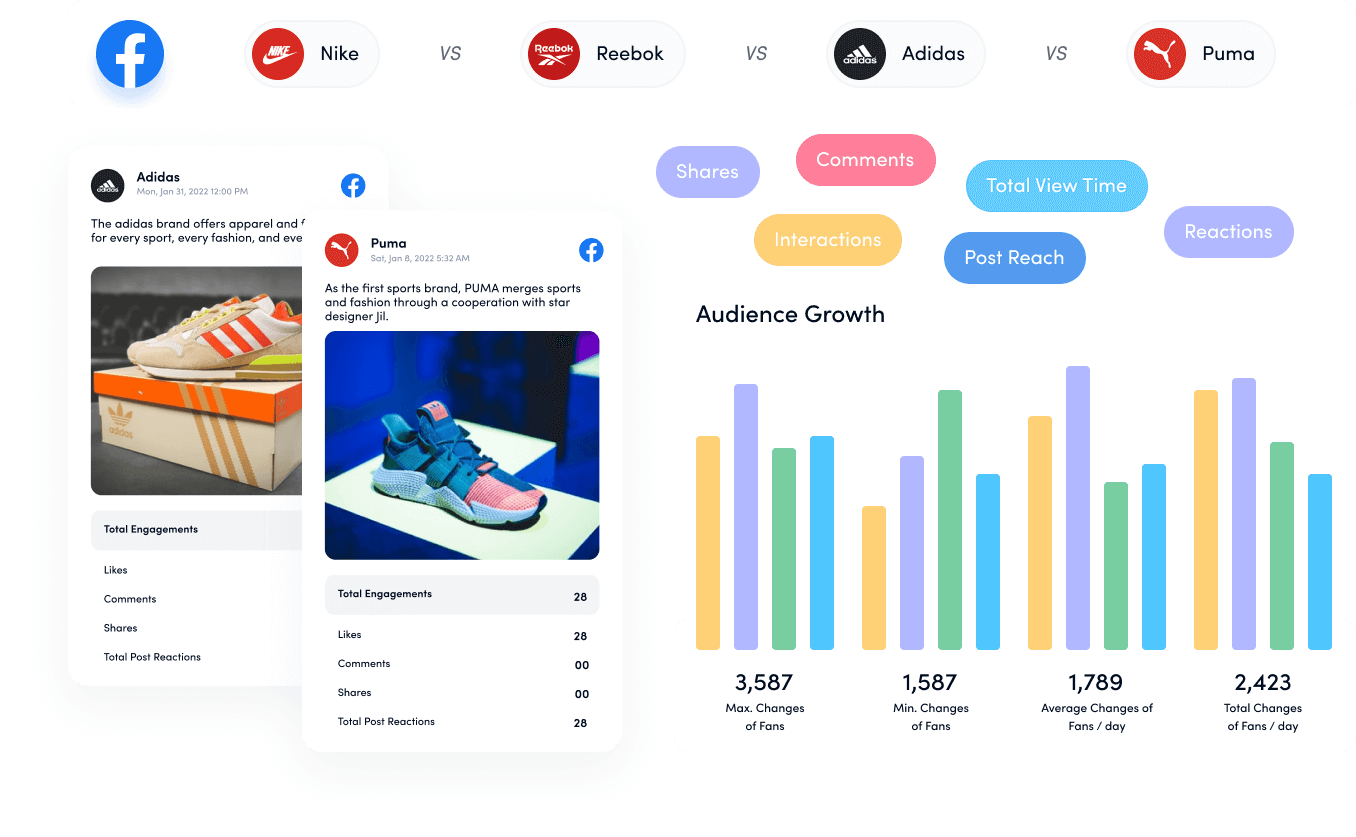
Step 3: Benchmark performance metrics
Quantitative analysis provides the objective data needed to understand competitor performance and identify opportunities for improvement.
Key metrics to track
- Audience metrics: Follower growth rate, audience quality, demographic analysis
- Engagement metrics: Overall engagement rate, engagement by content type, comment quality
- Content performance: Top-performing posts, posting frequency impact, optimal timing
Use both manual tracking methods and automated tools to gather comprehensive competitor intelligence.
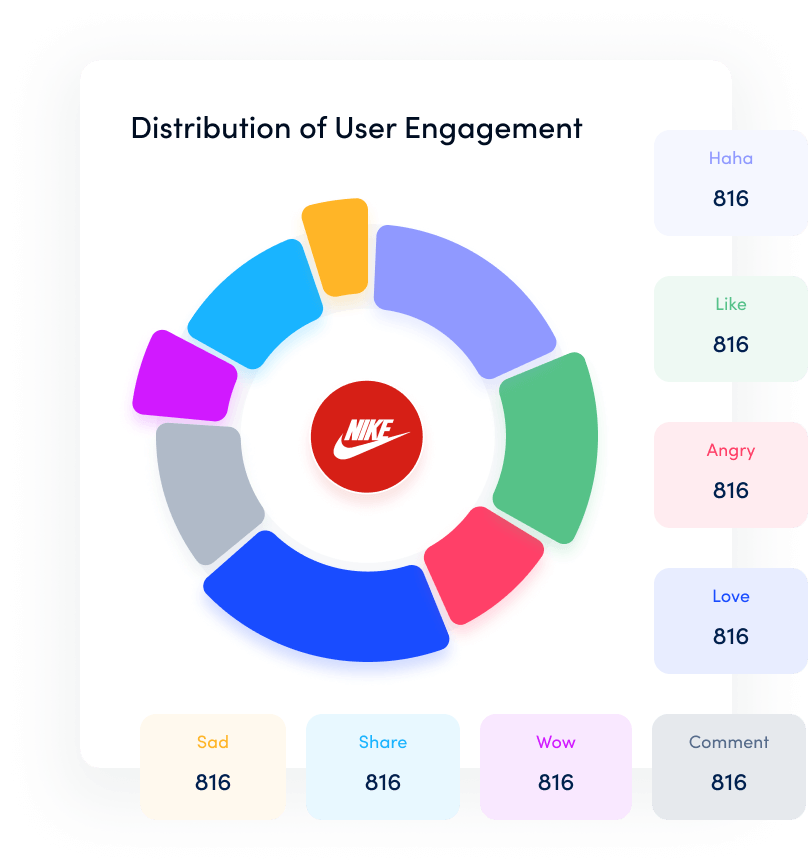
Step 4: Turn insights into action
The final step transforms competitor intelligence into strategic advantages through systematic implementation and continuous optimization.
Strategic planning
- SWOT analysis: Identify strengths, weaknesses, opportunities, and threats
- Competitor positioning: Differentiation opportunities and market gap identification
- Content strategy optimization: Plan content based on competitor insights
Implementation framework:
- Content calendar development: Plan content based on competitor insights
- Engagement strategy enhancement: Build stronger audience relationships
- Performance monitoring: Regular assessment and strategy adjustments

5 top social media competitor analysis tools
The right tools can transform time-consuming manual competitor research into streamlined, automated intelligence gathering. Here are the top 5 social media competitor analysis tools that deliver actionable insights for businesses of all sizes.
1. ContentStudio: All-in-one social media management with competitor intelligence
ContentStudio stands out as a comprehensive social media management platform that integrates robust competitor analysis features with content creation, scheduling, and analytics capabilities. Unlike standalone competitor analysis tools, ContentStudio provides a unified workspace where you can monitor competitors, create content, and manage your social media presence simultaneously.
Key features
- Multi-platform competitor monitoring: Track competitors across Facebook and Instagram from a single dashboard
- Content performance analysis: Identify which competitor posts generate the most engagement and discover successful content patterns
- Competitor benchmarking: Compare your social media performance against multiple competitors simultaneously
- Hashtag performance analytics: Analyze which hashtags competitors use most effectively and discover new opportunities
- Growth tracking: Monitor competitor follower growth and engagement trends over time
- Content gap analysis: Identify topics and content types your competitors cover that you might be missing
- Influencer collaboration tracking: Monitor which influencers your competitors work with
- Real-time monitoring: Live updates on competitor activities and performance changes
- Custom reporting: Generate detailed competitor analysis reports for stakeholders and strategic planning
Best for: Small to medium businesses seeking comprehensive social media management with integrated competitor intelligence, marketing agencies managing multiple clients, and growing brands needing scalable competitor analysis solutions.
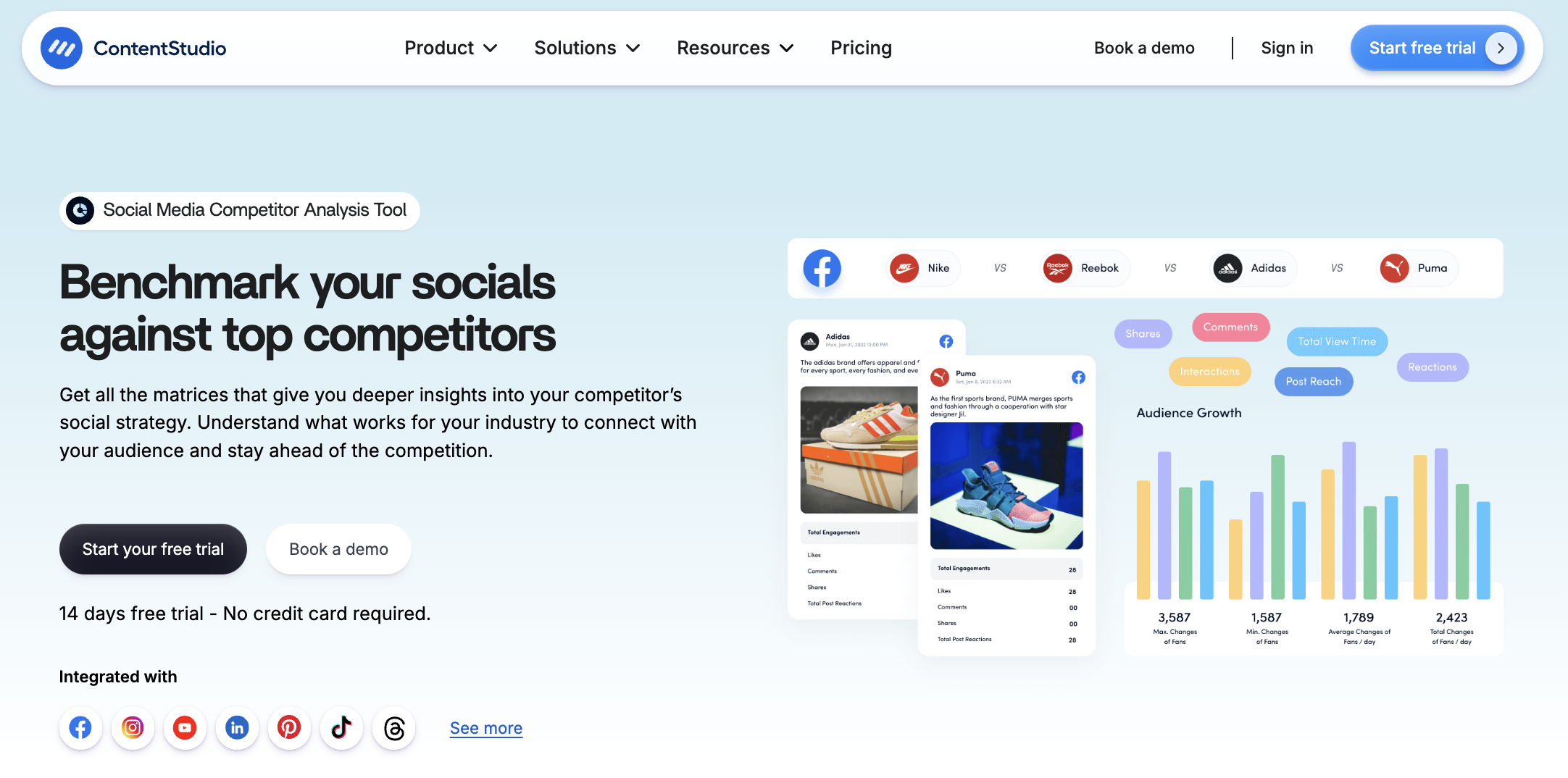
2. Ahrefs: SEO focused competitor analysis
Ahrefs is primarily known as an SEO powerhouse, but its social media competitor analysis capabilities make it valuable for understanding how competitor content performs across both search and social channels. The platform excels at showing the intersection between SEO and social media success, helping you create content that performs well in both areas.
Key features
- Content performance analysis across social platforms and search results
- Backlink analysis to understand which competitor content attracts links
- Keyword research to identify topics competitors rank for
- Content gap identification for both SEO and social opportunities
- SERP analysis to see how competitor content performs in search
- Historical data tracking for long-term trend analysis
Best for: Businesses focused on content marketing that want to understand both SEO and social performance of competitor content.
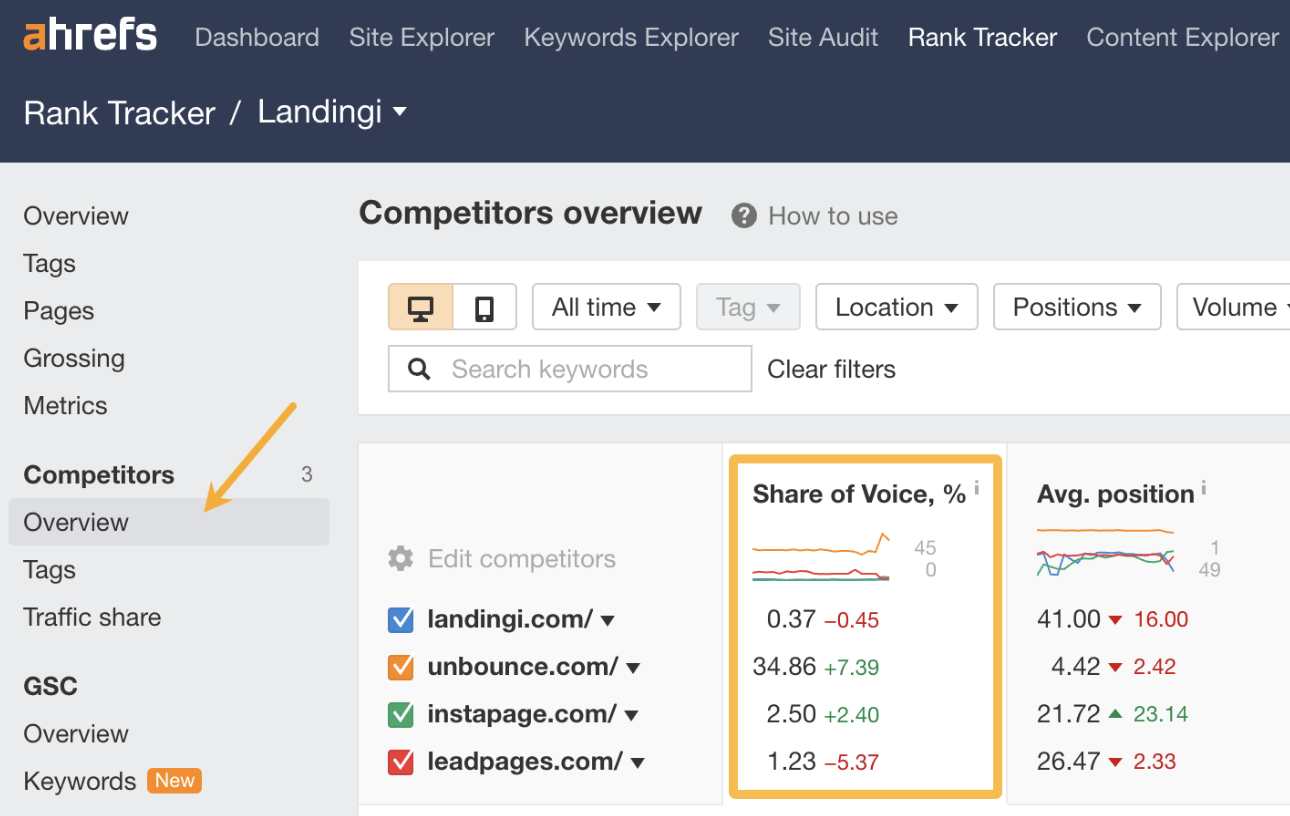
3. Mention: Comprehensive social listening
Mention provides real-time social media monitoring that goes beyond basic competitor tracking to offer comprehensive brand mention analysis across the entire web. The platform excels at tracking conversations about your competitors and identifying sentiment trends that can inform your strategy.
Key features
- Real-time competitor mention tracking across social platforms
- Web monitoring beyond social media (blogs, forums, news sites)
- Sentiment analysis and reputation monitoring
- Influencer identification and engagement tracking
- Crisis detection and alert systems
- Competitor comparison and benchmarking tools
Pricing: Plans start at $41/month for Solo, with team plans available at higher tiers.
Best for: Businesses needing comprehensive online reputation monitoring and competitor mention tracking across all digital channels.
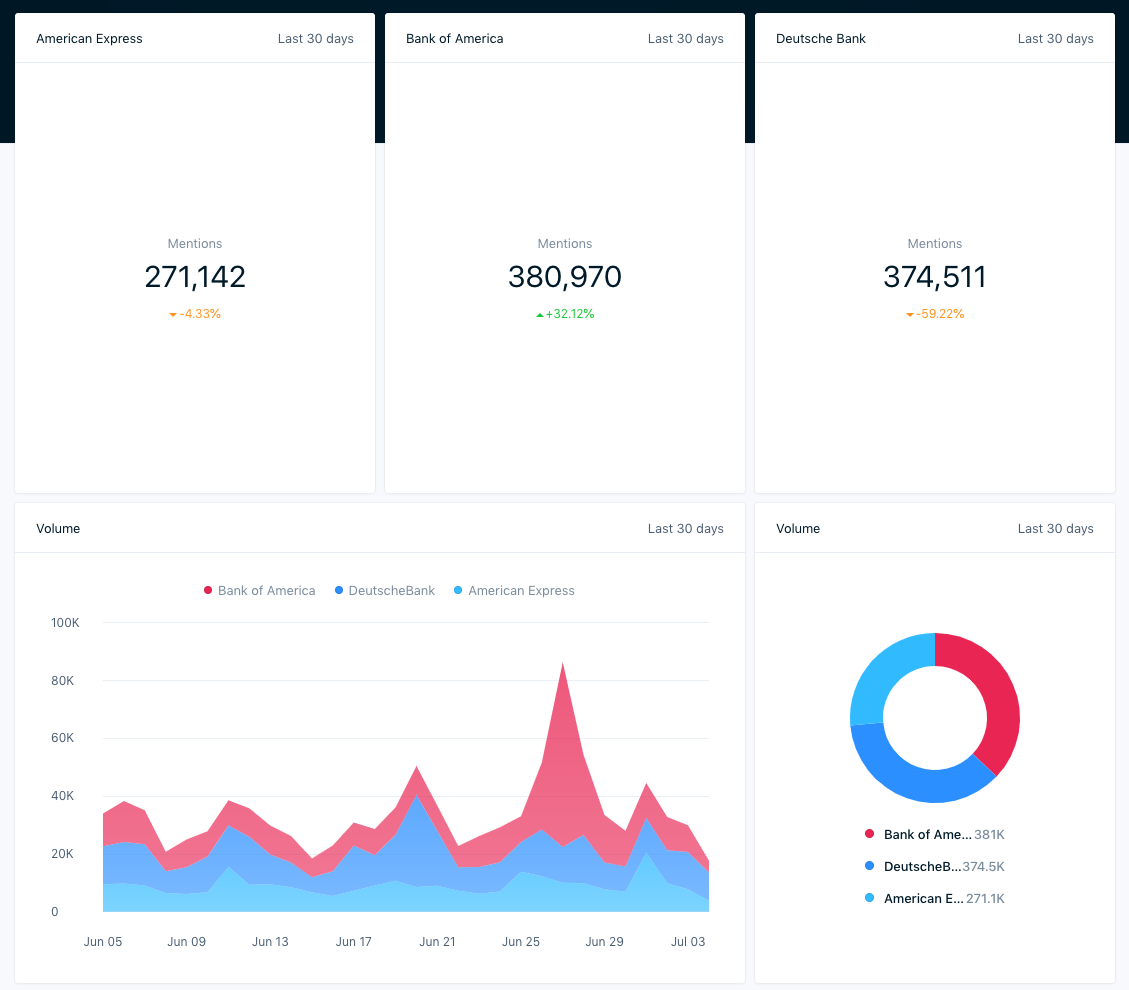
4. Socialbakers (Now Emplifi): Enterprise social analytics
Socialbakers, now part of Emplifi, offers enterprise-grade social media analytics with robust competitor analysis features. The platform offers in-depth insights into competitor performance across multiple social channels, featuring advanced benchmarking capabilities.
Key features
- Multi-platform competitor performance tracking
- Industry benchmarking and competitor positioning analysis
- Content performance analysis and optimization recommendations
- Audience demographic and behavior insights
- Influencer collaboration tracking and analysis
- Advanced reporting and dashboard customization
Best for: Large enterprises and agencies that require sophisticated social media analytics and competitor intelligence.
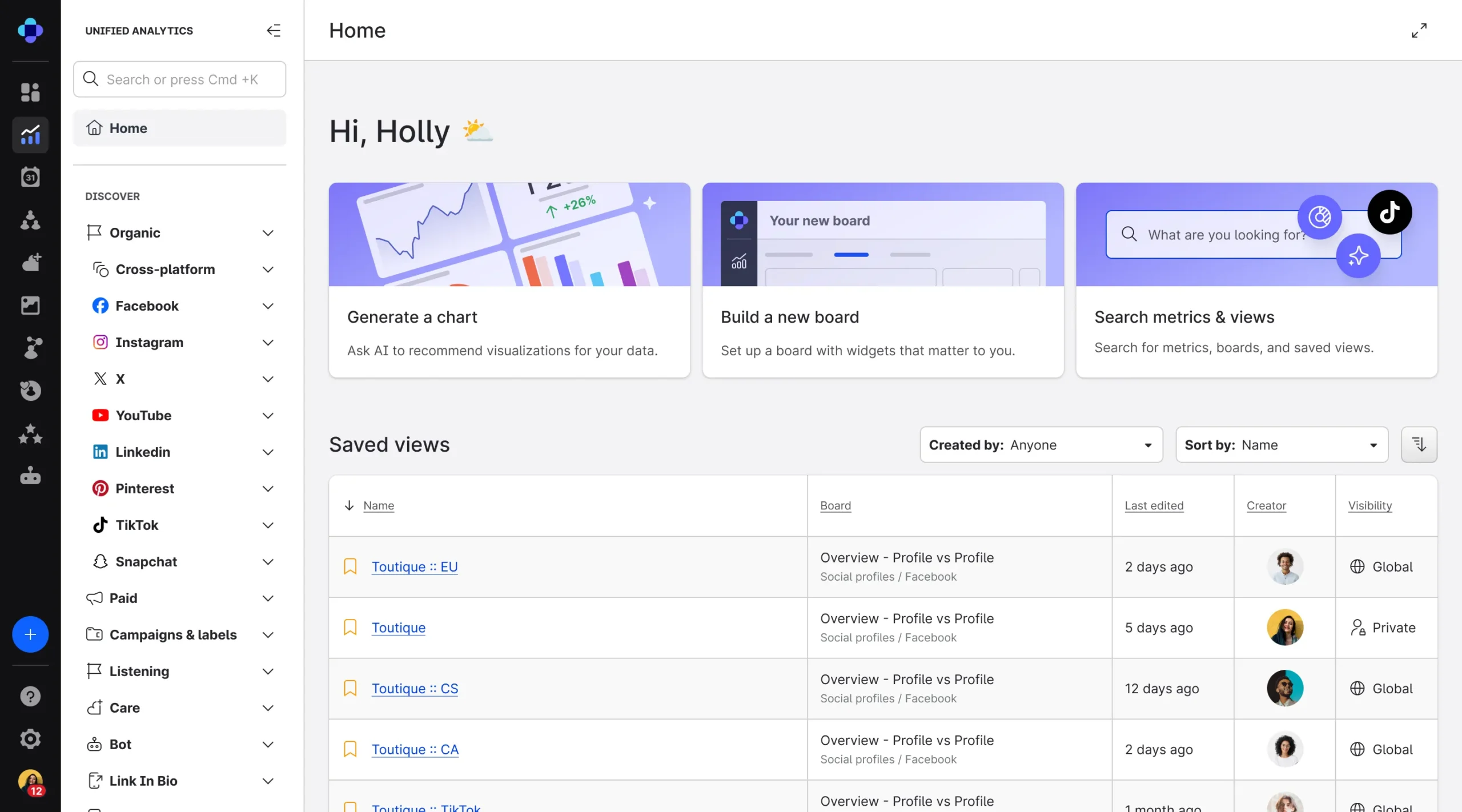
5. Keyhole: Hashtag and campaign analysis
Keyhole specializes in hashtag tracking and campaign analysis, making it an ideal tool for businesses that want to understand how competitors utilize hashtags and participate in trending conversations. The platform offers unique insights into hashtag performance and the effectiveness of social media campaigns.
Key features
- Hashtag performance tracking and competitor analysis
- Campaign monitoring and effectiveness measurement
- Real-time social media tracking and alerts
- Influencer identification and collaboration analysis
- Sentiment analysis and engagement tracking
- Historical hashtag and campaign data analysis
Best for: Businesses heavily focused on hashtag marketing, campaign tracking, and trend participation in their social media strategy.

Conclusion
Social media competitor analysis is no longer optional in today’s digital landscape—it’s a strategic necessity that can make the difference between social media success and obscurity. Ongoing competitor analysis should be part of your marketing strategy. With the right tools and approach to analyzing other businesses in your space, you can keep a pulse on companies around you without wasting time or stressing over small details.
Simplified social media marketing for individuals & agencies.
Try ContentStudio for FREE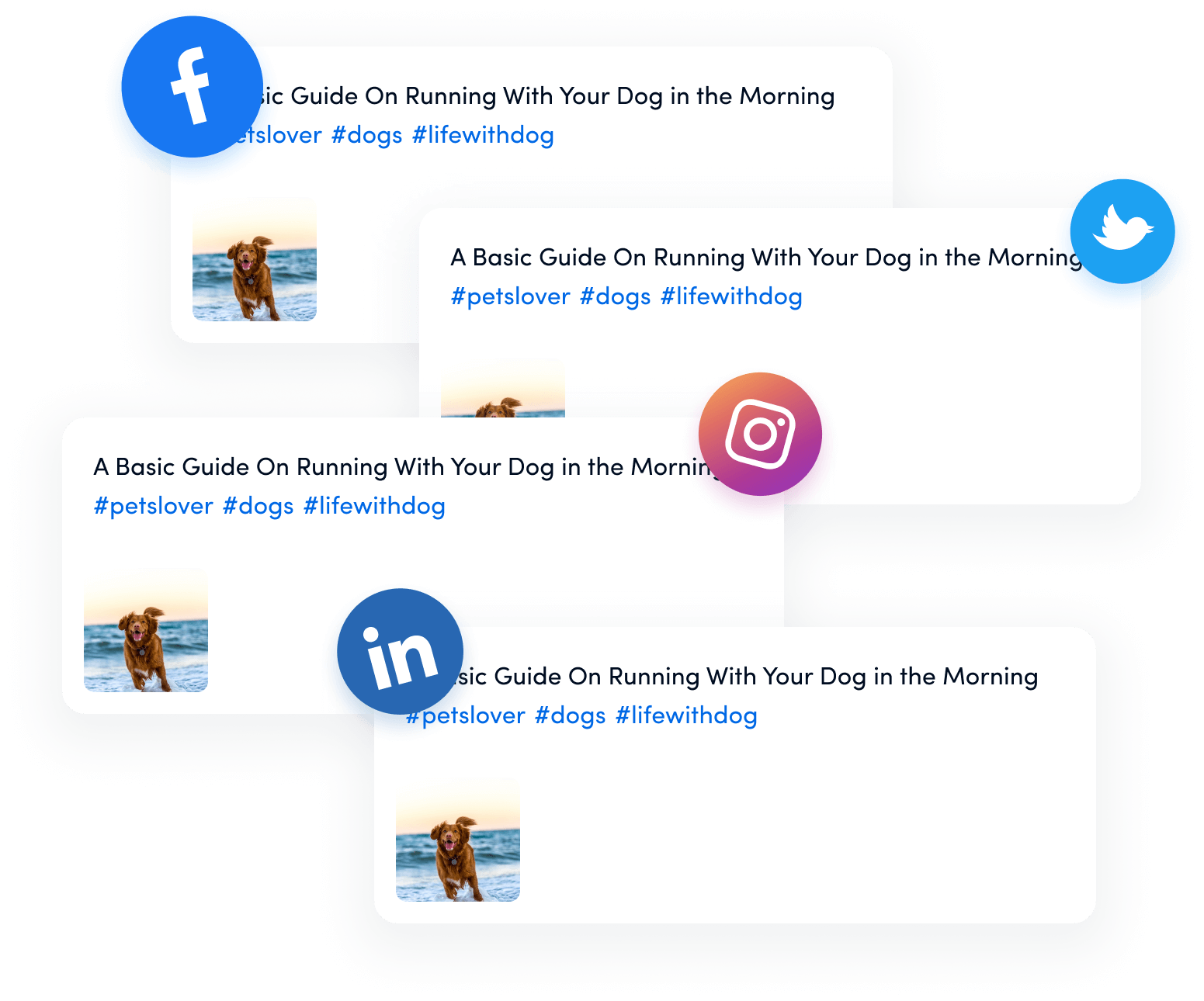
FAQ’s
How often should I perform a social media competitor analysis?
You should conduct a weekly competitor check, a comprehensive analysis monthly, and a strategic review quarterly. Set up automated monitoring for real-time insights, but dedicate time for deep analysis at least once per month to stay ahead of competitor changes and market trends.
Which social media platforms should I analyze for competitors?
Focus on platforms where your target audience is most active and where your competitors have a strong presence. Typically, this includes Facebook, Instagram, Twitter, LinkedIn, and TikTok. However, also consider YouTube, Pinterest, and emerging platforms depending on your industry and audience demographics.
How many competitors should I analyze?
Monitor 5-10 competitors regularly, with 3-5 receiving deep daily analysis. Include both direct competitors (similar products/services) and indirect competitors (targeting the same audience). This provides comprehensive insights without overwhelming your analysis process.
Is it legal to analyze competitors’ social media activities?
Yes, analyzing publicly available social media content is completely legal. However, you should never create fake accounts, use automated bots that violate platform terms, or attempt to access private competitor information. Stick to publicly available data and respect platform guidelines.
Can small businesses benefit from social media competitor analysis?
Absolutely! Small businesses can gain significant advantages from competitor analysis by identifying market gaps, understanding what content resonates with their target audience, optimizing limited resources, and discovering cost-effective strategies that work in their industry without the trial-and-error expense.
What’s the difference between social media competitor analysis and market research?
Social media competitor analysis specifically focuses on competitors’ social media strategies, content, and performance. Market research is broader, examining overall industry trends, customer behavior, and market conditions. Competitor analysis is a subset of market research focused on social media channels.
